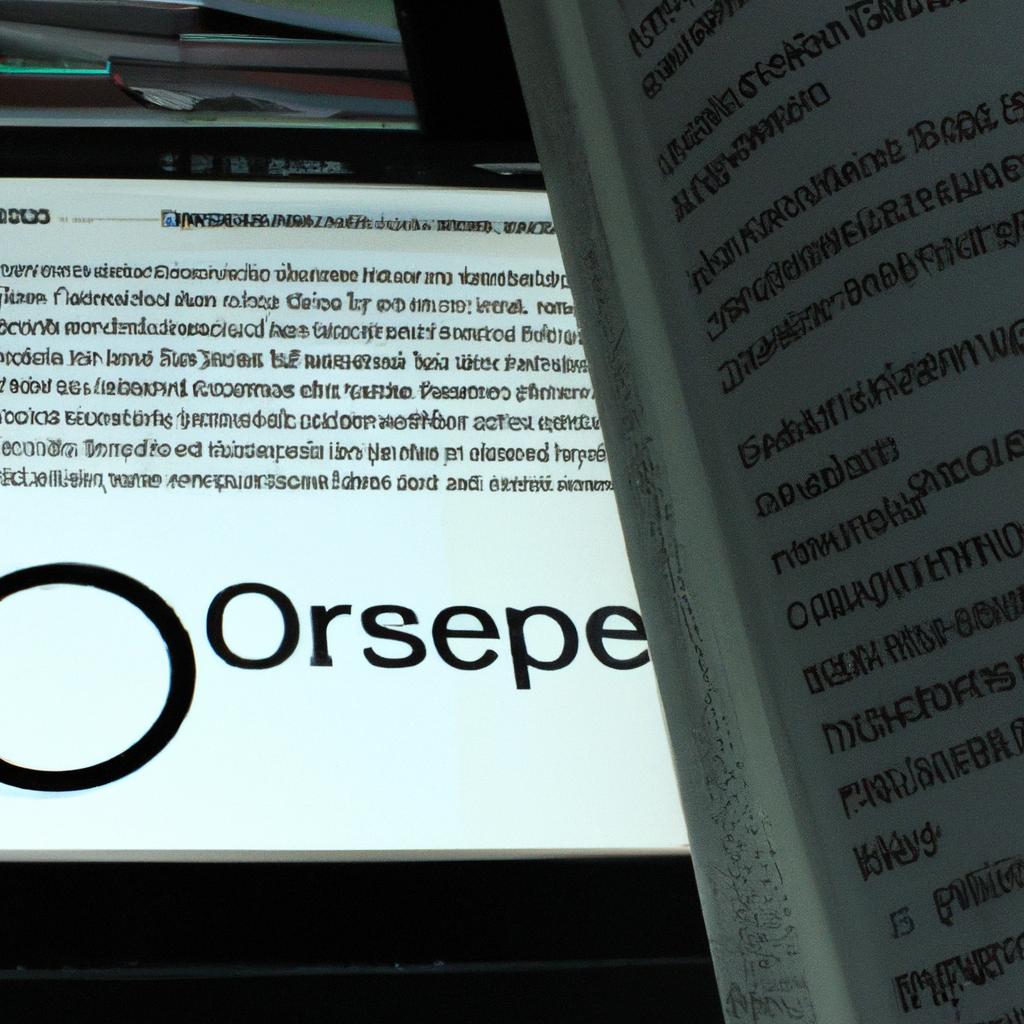Open source software has gained significant traction in recent years, enabling individuals and organizations to access, modify, and distribute software freely. One of the most widely used open source software licenses is the GNU General Public License (GPL). The GPL provides a legal framework that ensures users’ freedom to study, modify, and share software while maintaining its openness for future generations. To comprehend the nuances of this licensing model, it is crucial to explore its principles, objectives, and implications. By examining a hypothetical case involving an application developed under the GPL, we can gain insight into how this license functions in practice.
In our hypothetical scenario, let us consider a mobile messaging application called “CommUnite,” designed as an open-source project released under the GPL. CommUnite allows users to securely communicate with one another using end-to-end encryption and utilizes innovative features such as voice messages and group chats. As per the provisions of the GPL, any individual or organization can download CommUnite’s source code free of charge. In doing so, they gain not only access but also permission to study and modify the underlying code base according to their needs. This example highlights the essence of GPL – promoting collaboration and knowledge sharing within the realm of open-source software development.
What is GPL?
What is GPL?
Imagine you have just developed a groundbreaking software application that has the potential to revolutionize an entire industry. You want to share this innovation with others, but at the same time, you also want to ensure that your work remains protected and continues to be used for the greater good. This is where GPL, or General Public License, comes into play.
GPL is a widely-used open-source software license that allows developers to distribute their creations freely while still maintaining certain rights and restrictions. It was first introduced in 1989 by Richard Stallman and the Free Software Foundation (FSF). One of the most notable examples of software licensed under GPL is the Linux operating system.
To better understand GPL, let’s explore some key points about this license:
- Copyleft principle: The central tenet of GPL is copyleft. Unlike traditional copyright laws which restrict others from using or modifying your work, copyleft grants users freedom by allowing them to view, modify, and distribute derivative works based on your original creation.
- Reciprocity requirement: Under GPL, if someone modifies or incorporates your code into their own project and subsequently distributes it, they must also release those modifications under the same GPL terms. This ensures that any improvements made are accessible to everyone within the open-source community.
- Viral nature: Due to its reciprocity requirement, some refer to GPL as “viral” because once code becomes part of a project governed by this license, it extends its reach throughout subsequent versions or derivatives.
- Community-driven development: By encouraging collaboration and knowledge-sharing among developers worldwide, GPL fosters a vibrant ecosystem where ideas can flourish collectively rather than being siloed away behind proprietary walls.
In summary, GPL enables creators to protect their intellectual property while promoting openness and sharing within the software community. To delve further into how this influential licensing model came about, let’s now turn our attention towards exploring the history of GPL.
History of GPL
GPL: Open Source Software Licensing Explained
Transitioning from the previous section, let us now delve deeper into the significance and implications of the General Public License (GPL). To illustrate this, consider a hypothetical scenario where a software developer named Alex creates a new application using open source code. If Alex decides to license their application under the GPL, it means that anyone who uses or modifies their software must also make their modifications available as open source.
The GPL has had a profound impact on the world of open source software. Here are some key aspects that highlight its importance:
-
Community Collaboration: The GPL promotes collaboration among developers by ensuring that any modifications made to an existing piece of software remain accessible to others within the community. This fosters innovation and allows for continuous improvement as developers can build upon each other’s work.
-
Protection of User Rights: By requiring derivative works to be licensed under the same terms, the GPL protects user rights in two ways. First, users have access to the complete source code, allowing them to understand how the software functions and verify its integrity. Second, they retain the freedom to modify and distribute these works according to their needs.
-
Ensuring Software Freedom: The central aim of the GPL is to ensure that users have control over their own computing experience. It prevents proprietary practices such as locking users into specific platforms or denying them access to underlying code. Instead, it empowers users with transparency and enables them to exercise their freedoms without restrictions.
| Emphasizing Community Collaboration |
|---|
| Encourages sharing |
| Facilitates knowledge exchange |
| Drives collective problem-solving |
In conclusion, the General Public License plays a vital role in promoting collaborative development, protecting user rights, and upholding software freedom within the realm of open source technology. Understanding its principles lays the foundation for a vibrant and inclusive software ecosystem.
GPL Version 2
Having explored the history of GPL, we now turn our attention to its subsequent versions and their impact on open source software licensing. One notable version that emerged after the initial release is GPL Version 2.
Paragraph 1:
To understand the significance of GPL Version 2, let’s consider a hypothetical scenario where an individual named Alex creates a piece of software called “OpenCalc.” Alex decides to license OpenCalc under GPL Version 2, granting users the freedom to use, modify, and distribute it freely as long as they adhere to certain conditions outlined in the license. This example highlights how GPL Version 2 extends beyond mere permission to use software; rather, it emphasizes user rights and fosters collaboration within the open source community.
Paragraph 2:
In order to grasp the key features introduced by GPL Version 2, here are some important aspects worth noting:
- Copyleft Provision: By incorporating copyleft provisions into the license, which require modifications or derivative works based on GPL-licensed software to be released under the same terms, GNU aimed at ensuring that free software remains free.
- Patent Grant Clause: The introduction of this clause helped protect developers from potential patent infringement claims by allowing them access to any patents held by contributors of the licensed software.
- Compatibility with Other Licenses: While GPLv1 was incompatible with many other licenses due to restrictions placed on distribution methods, GPLv2 addressed these concerns by permitting linking with non-GPL code through system libraries.
- Termination Conditions: Under specific circumstances such as violation of license terms or failure to provide corresponding source code upon request, GPLv2 allows for termination of rights granted under its provisions.
Paragraph 3:
This table presents a comparison between GPLv1 and GPLv2 regarding various aspects related to their scope and protections:
| Aspect | GPLv1 | GPLv2 |
|---|---|---|
| Distribution Methods | Restrictions | Less restrictive |
| Compatibility | Incompatible with many licenses | More compatible |
| Copyleft Provision | Limited | Stronger and more explicit |
| Termination Conditions | Not explicitly outlined | Clear termination provisions |
With the introduction of GPL Version 2, open source software licensing took a significant leap forward, emphasizing user rights, fostering collaboration, and addressing compatibility concerns. In our subsequent exploration of GPL Version 3, we will delve into further advancements made in open source licensing.
Building upon the foundation established by GPL Version 2, let’s now examine the evolution and impact of GPL Version 3.
GPL Version 3
Continuing from the previous section on GPL Version 2, it is essential to understand its key provisions and how they impact the distribution of open-source software. To illustrate these concepts, let’s consider a hypothetical case study involving a group of developers who have created an innovative mobile application.
Firstly, under GPL Version 2, if this group decides to distribute their application, they must provide users with access to the application’s source code. This ensures that anyone using the application can examine and modify it as desired. By granting users this freedom, GPL fosters collaboration and empowers individuals to customize software according to their specific needs.
To delve deeper into the implications of GPL Version 2, let us explore four important points:
- Copyleft provision: The copyleft approach in GPL Version 2 requires any modified or derived works of the original software to be distributed under the same license terms. This prevents commercial entities from appropriating open-source projects without contributing back to the community.
- Viral nature: Due to its viral nature, if a developer incorporates even a small portion of GPL-licensed code into their project, their entire project becomes subject to the terms and conditions of the GPL license.
- Compatibility concerns: While many other open-source licenses are compatible with GPL Version 2, some proprietary licenses may not coexist harmoniously due to conflicts in licensing requirements.
- Distribution obligations: Developers distributing applications covered by GPL Version 2 must make sure that recipients receive both object code (the compiled version) and complete corresponding source code.
The following table provides an overview comparing certain aspects of different open-source licenses for further clarity:
| License | Copyleft Provision | Compatibility | Distribution Obligations |
|---|---|---|---|
| GNU General Public License (GPL) | Yes | Compatible with most | Provide complete source + object code |
| MIT License | No | Compatible with all | Provide source + notice of license |
| Apache License | No | Compatible with most | Provide complete source + object code |
With a solid understanding of GPL Version 2 and its implications, we can now explore the subsequent section on the benefits that this licensing framework offers to both developers and users alike. By adopting GPL, individuals contribute towards building a collaborative ecosystem where open-source software thrives.
[Transition Sentence]: Moving forward, let us examine the various advantages presented by GPL licenses in more detail in the following section about “Benefits of GPL.”
Benefits of GPL
Imagine a software developer named John who has created an innovative application for managing personal finances. He wants to distribute his work freely while ensuring that any modifications made by others are also shared openly with the community. To achieve this, John decides to license his software under the GNU General Public License (GPL), specifically version 3.
The GPL Version 3 is considered one of the most prominent open source licenses available today. It builds upon its predecessor, GPL Version 2, introducing several key features aimed at addressing modern challenges in software licensing:
-
Anti-Tivoization: Unlike previous versions, GPL Version 3 includes provisions against “tivoization.” Tivoization refers to the practice of using technological measures to prevent modified versions of software from running on a device. This provision ensures that users have full control over their devices and can modify and run GPLv3-licensed software as they see fit.
-
Patent Protection: The updated license provides explicit patent protection for users of GPL-licensed software. If someone distributes a program under GPLv3 and subsequently sues another user for patent infringement related to that program, their right to distribute the software automatically terminates. This feature aims to safeguard developers and users from potential legal disputes involving patents.
-
Compatibility with Other Licenses: While ensuring its strong copyleft nature, GPL Version 3 introduces mechanisms allowing compatibility with certain other free and open source licenses like Apache License 2.0 or Eclipse Public License (EPL). These compatibility clauses enable projects licensed under different licenses to interoperate effectively without violating each other’s terms.
To understand these features more clearly, let’s take a look at a comparison between some popular open source licenses:
| Copyleft | Patent Protection | Compatibility | |
|---|---|---|---|
| GPL v2 | Strong | No | Limited |
| GPL v3 | Strong | Yes | Enhanced (selective) |
| MIT | Permissive | No | Broad |
| Apache | Permissive | Yes | Broad |
This table provides a glimpse into the key differences between these licenses, highlighting how GPL Version 3 differentiates itself by offering strong copyleft provisions and patent protection while maintaining compatibility with select permissive licenses.
With its updated features, GPL Version 3 continues to ensure software freedom and promote collaboration within the open source community.
Transitioning seamlessly into our discussion on “Criticism of GPL,” it is important to examine both sides of the debate surrounding this widely adopted open source license.
Criticism of GPL
The GNU General Public License (GPL) has been widely adopted and praised for its benefits in promoting open source software. However, it is not without its critics. In this section, we will explore some of the criticisms that have been raised against the GPL.
One common criticism of the GPL is that it imposes too many restrictions on developers and can hinder innovation. Critics argue that the copyleft nature of the license, which requires any derivative works to also be licensed under the GPL, limits developers’ freedom to choose alternative licensing options or incorporate GPL-licensed code into proprietary projects. This restriction can potentially discourage companies from investing in open source technologies.
For example, consider a hypothetical scenario where a company wants to use a popular open source library released under the GPL in their proprietary software product. The requirement to make their entire project open source may deter them from using the library altogether, resulting in missed opportunities for collaboration and improvement.
Furthermore, opponents claim that the viral effect of the GPL creates an unequal playing field by forcing smaller developers or organizations with limited resources to release their work as open source while larger corporations can afford alternative licenses. This argument suggests that instead of fostering equality and fairness within the software development community, the GPL may inadvertently perpetuate existing power imbalances.
To illustrate these points further, let us examine a comparison between two different software licenses:
| Proprietary License | GNU General Public License (GPL) | |
|---|---|---|
| Cost | Expensive | Free |
| Freedom | Limited | Extensive |
| Derivative Works | Not required | Must be distributed under same license |
| Collaboration | Restricted | Encouraged |
This table highlights some key differences between a proprietary license and the GPL. While proprietary licenses often come at a cost and impose certain limitations on usage rights and collaboration possibilities, the GPL offers freedom and favors a more collaborative approach.
In conclusion, while the GNU General Public License (GPL) has been widely adopted and praised for its benefits in promoting open source software, it is not immune to criticism. Some argue that the restrictions imposed by the copyleft nature of the license can hinder innovation and create inequalities within the software development community. Understanding these criticisms allows for a balanced perspective on the GPL’s impact on the open source ecosystem.




